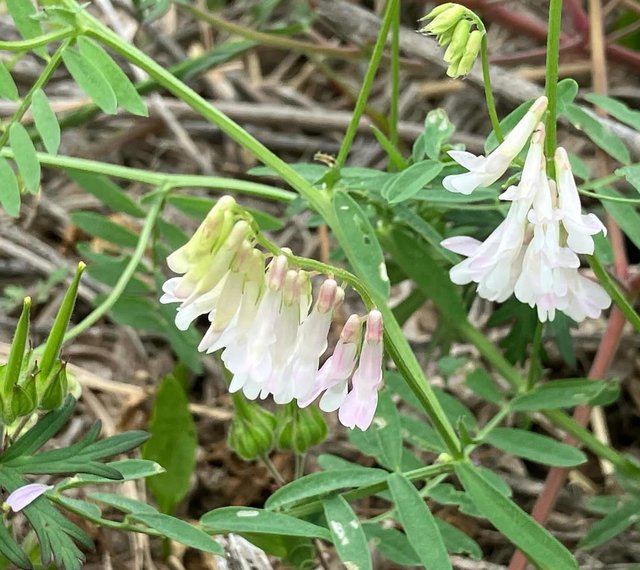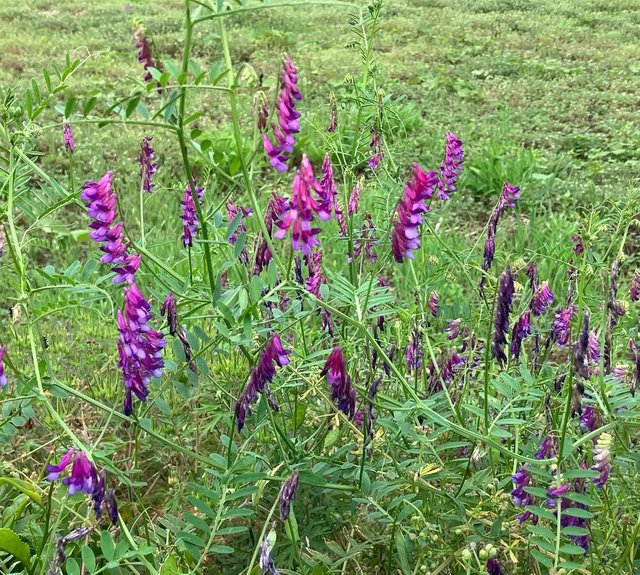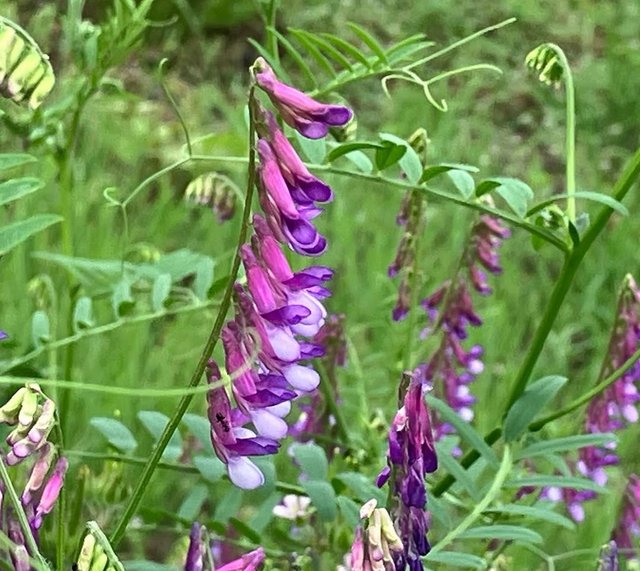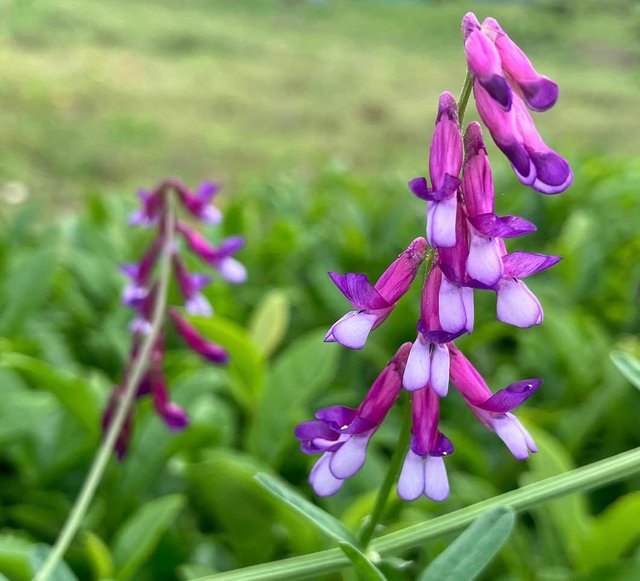Vicia sylvatica
In the quiet understories of European and western Asian woodlands, one might chance upon a delicate climber with tendrils reaching out like green fingers, its slender stems swaying in dappled sunlight. This is Vicia sylvatica, commonly known as the wood vetch, a member of the legume family (Fabaceae) that enchants with its elegant, soft violet-and-white blossoms and trailing habit. Though often overlooked in favor of more flamboyant wildflowers, Vicia sylvatica is a plant of subtle charm and ecological importance.
The wood vetch is a perennial herbaceous climber, known for its long, slender stems that can reach up to 1–2 meters in length. Unlike many of its vetch cousins that sprawl low, Vicia sylvatica tends to scramble through low shrubs or cling to supporting vegetation using its tendrils—modified leaf tips that coil around whatever support they can find.The true allure of Vicia sylvatica lies in its flowers. Blooming from late spring through summer.These flowers are borne in loose racemes, typically with 6 to 15 blossoms per cluster. Each individual flower resembles the classic.A banner petal (the uppermost and largest), usually white streaked with lilac or purple veins.
The coloration of the flower is delicate yet striking. The contrast of creamy whites with lavender or violet streaks makes them highly attractive not only to the human eye but to pollinators as well. Bees, in particular, are frequent visitors, contributing to the plant’s pollination and playing a role in local woodland biodiversity.The leaves of Vicia sylvatica are compound, with 6 to 10 pairs of narrow, oval-shaped leaflets arranged pinnately. At the end of each leaf is a tendril, which helps the plant cling to its surroundings and climb toward the light. This climbing habit allows the wood vetc h to exploit the vertical space in a forest edge or hedgerow—making it an excellent groundcover and natural companion in rewilding and forest gardening projects.




